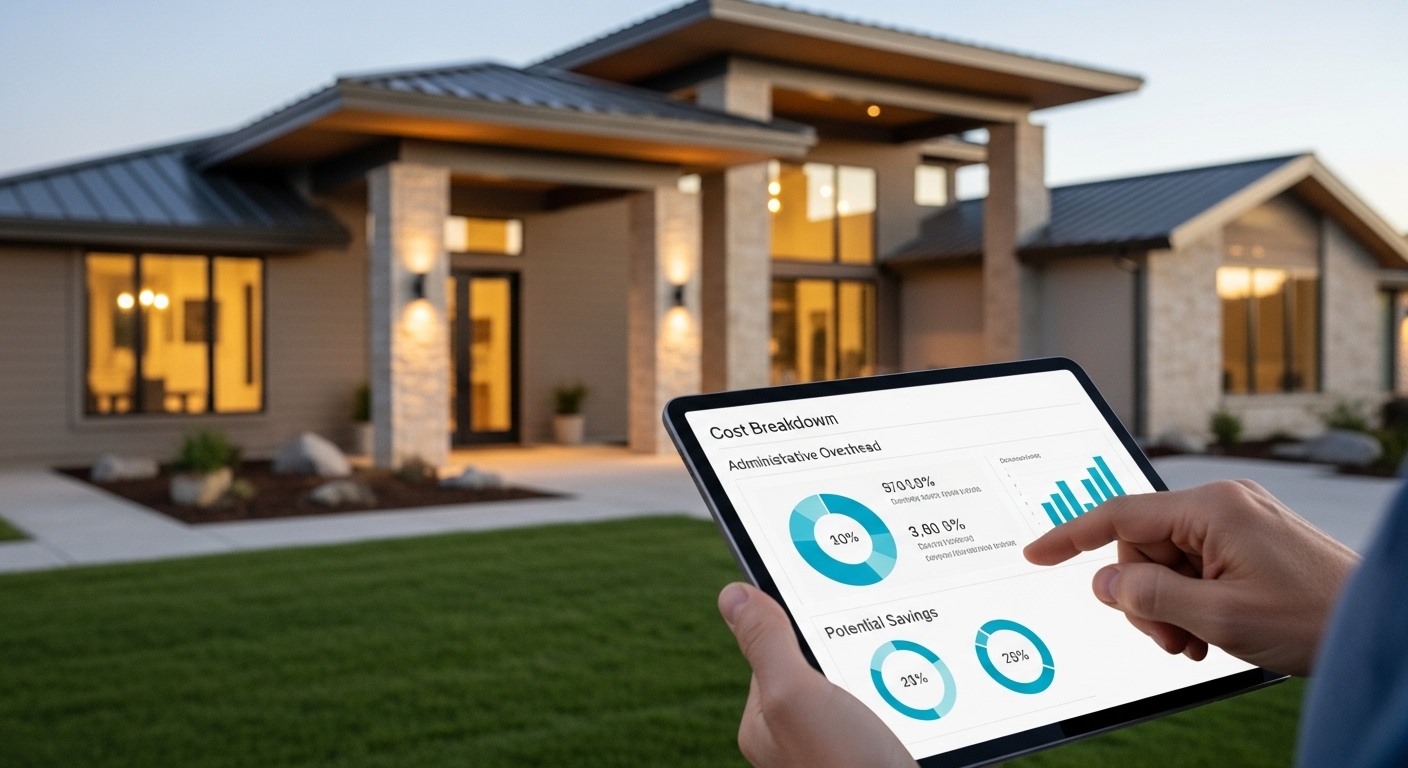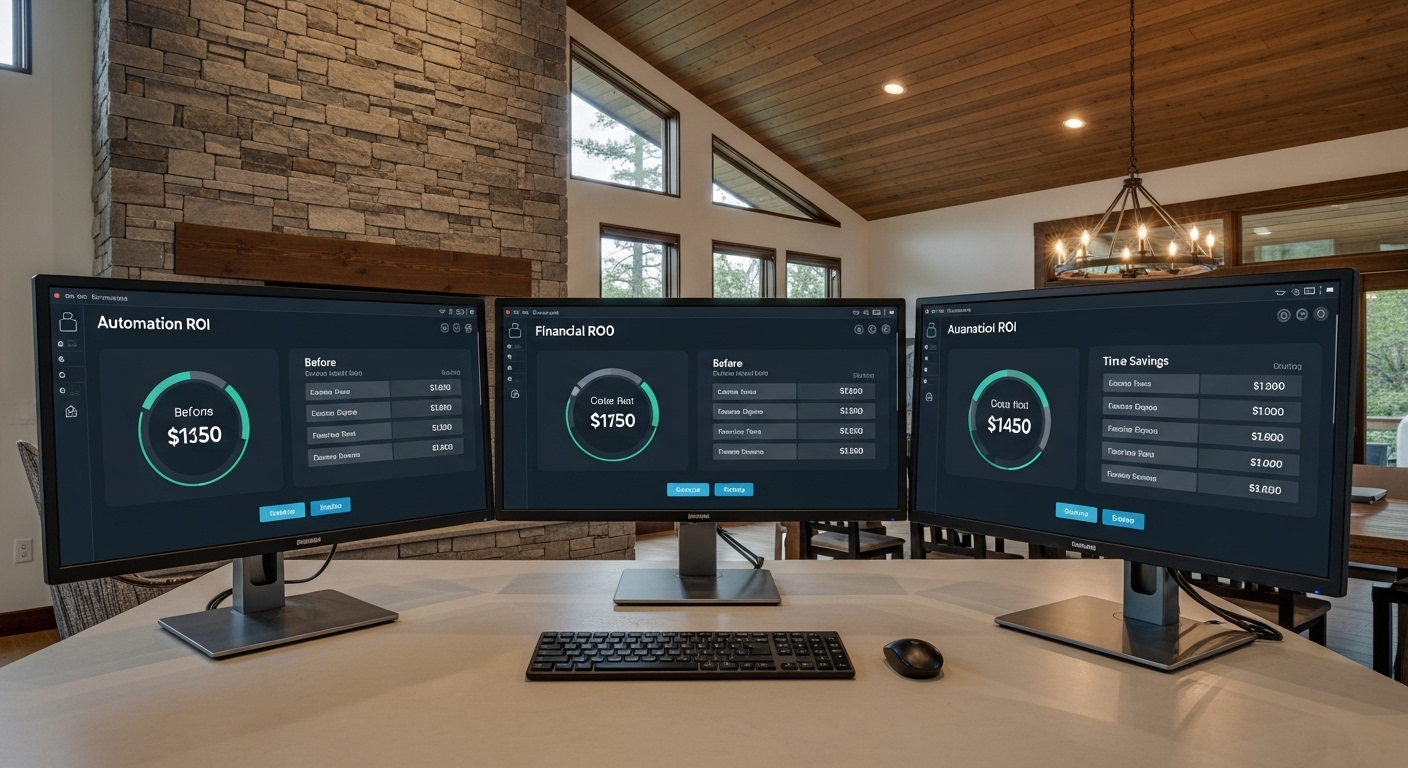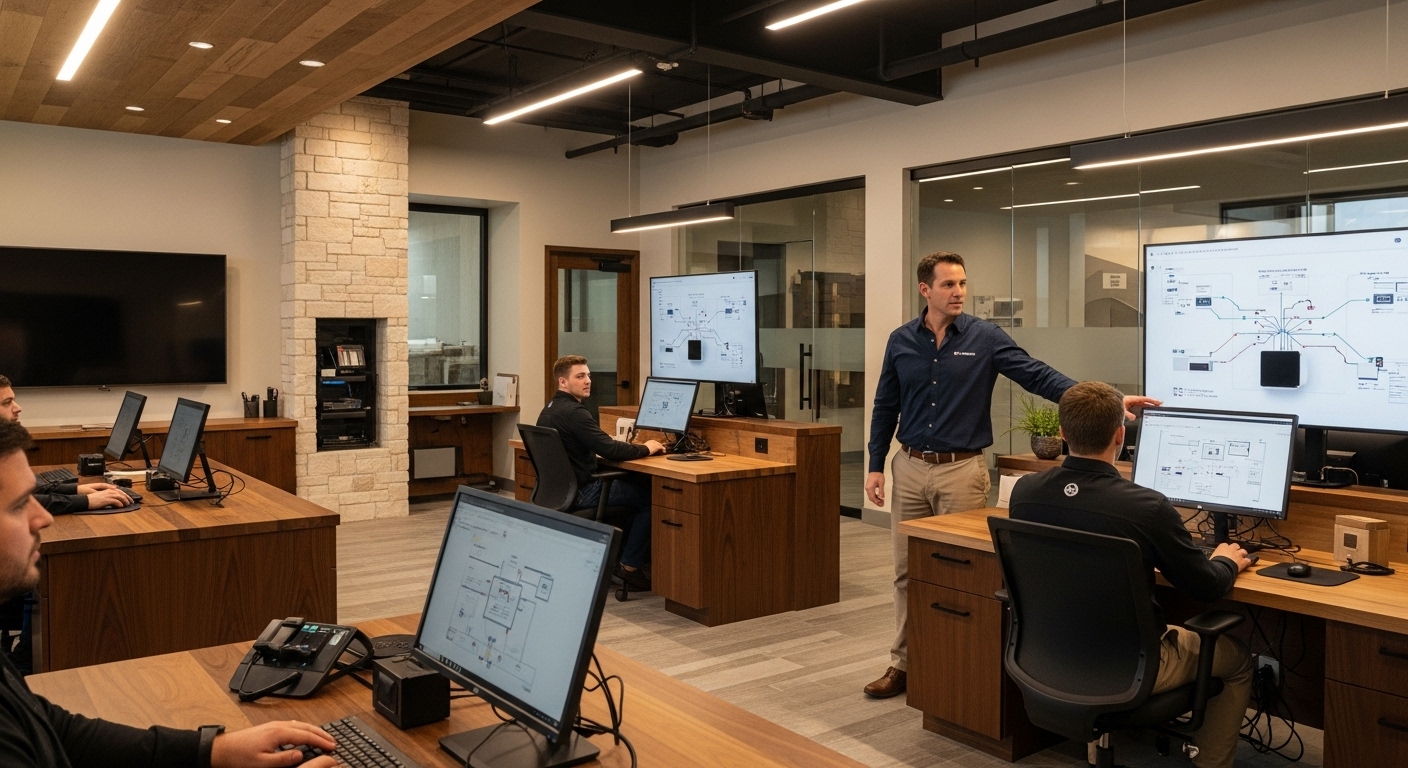August 4, 2025 by 100XBuilds Team
Automation Tools That Cut Administrative Costs by 47%

A $12M luxury builder in Austin reduced their administrative overhead by 47% in eight months using strategic automation tools. Their project managers went from spending 6 hours daily on paperwork to just 2 hours, redirecting that time toward client relationships and quality control.
This isn't an isolated success story. High-revenue builders are discovering that automation isn't just about efficiency—it's about competitive advantage in a market where margins matter and client expectations continue rising.
The Hidden Cost of Manual Administrative Work
Your administrative burden is costing more than you realize. Industry data shows luxury builders lose an average of $180,000 annually to inefficient administrative processes. This includes:
Time waste across departments: Project managers spending 40% of their day on data entry instead of site supervision
Error multiplication: Manual processes create 3x more mistakes than automated systems, leading to costly rework and client dissatisfaction
Scalability barriers: Every new project requires proportional administrative staff increases without automation
Client experience degradation: Delayed responses and inconsistent communication due to manual workflow bottlenecks

The builders who recognize this reality first gain significant competitive advantages. They're not just saving money—they're reinvesting those savings into client experience improvements and business growth initiatives.
Core Automation Categories for Builder Operations
Project Management Automation
Automated scheduling systems eliminate the back-and-forth of manual coordination. Tools like Buildertrend and CoConstruct automatically sync subcontractor schedules, send reminder notifications, and update project timelines based on completion milestones.
A $8M builder in Denver implemented automated scheduling and reduced project delays by 23%. Their subcontractors receive automatic notifications 48 hours before scheduled work, with weather alerts and material delivery confirmations built into the workflow.
Progress tracking automation captures project updates without manual intervention. Photo documentation apps automatically timestamp and GPS-tag images, while integration with project management systems updates completion percentages based on milestone achievements.
Budget monitoring systems track expenses in real-time, automatically flagging cost overruns and generating variance reports. This prevents the common scenario where budget issues aren't discovered until it's too late to course-correct.

Client Communication Automation
Automated update sequences keep clients informed without constant manual effort. Set up trigger-based communications that send project updates when specific milestones are reached, weather delays occur, or change orders are approved.
Document delivery automation ensures clients receive contracts, permits, and progress reports exactly when needed. No more missed emails or forgotten follow-ups that create client anxiety.
Feedback collection systems automatically solicit client input at predetermined project phases, ensuring issues are caught early and client satisfaction remains high throughout the build process.
Financial Process Automation
Invoice processing automation eliminates manual data entry and approval bottlenecks. Subcontractor invoices are automatically matched against contracts and purchase orders, with approval workflows routing to appropriate managers based on dollar thresholds.
Payment scheduling systems ensure timely payments to subcontractors and suppliers while maintaining cash flow optimization. Automated systems can negotiate early payment discounts and avoid late payment penalties.
Financial reporting automation generates real-time profitability reports by project, client, and time period. This visibility enables proactive decision-making rather than reactive problem-solving.
Implementation Strategy: The 90-Day Automation Rollout
Phase 1: Foundation Setup (Days 1-30)
Process documentation comes first. You cannot automate what you haven't clearly defined. Map your current workflows, identifying every handoff point and decision node.
Tool selection and integration requires careful consideration of your existing software ecosystem. Choose automation tools that integrate seamlessly with your current CRM, accounting software, and project management systems.
Staff training and buy-in determines success or failure. Involve key team members in tool selection and provide comprehensive training before full implementation.

Phase 2: Core Process Automation (Days 31-60)
Client onboarding automation standardizes the experience from initial contract through project kickoff. Automated sequences ensure no steps are missed and clients feel consistently informed and valued.
Subcontractor management automation streamlines bidding, scheduling, and payment processes. Automated systems can manage multiple concurrent projects without increasing administrative overhead.
Document management automation eliminates manual filing and retrieval. Contracts, permits, change orders, and progress photos are automatically organized and accessible to relevant team members.
Phase 3: Advanced Optimization (Days 61-90)
Predictive analytics integration uses historical data to forecast project timelines, budget requirements, and resource needs. This enables proactive planning rather than reactive management.
Quality control automation implements systematic checkpoints and documentation requirements. Automated systems ensure consistent quality standards across all projects and teams.
Performance monitoring systems track key metrics automatically, generating alerts when performance deviates from established benchmarks.
Measuring Automation ROI
Time Savings Metrics
Track hours saved per week across different roles and functions. A properly implemented automation system should show:
Administrative staff: 15-25 hours per week redirected from data entry to strategic tasks
Project managers: 10-15 hours per week shifted from paperwork to site supervision and client interaction
Executive leadership: 5-10 hours per week freed from status meetings and manual reporting review
Cost Reduction Measurements
Direct cost savings include reduced overtime, fewer administrative errors, and decreased need for additional administrative staff as project volume grows.
Indirect cost benefits encompass improved client satisfaction scores, reduced project delays, and enhanced subcontractor relationships due to consistent, timely communication.

Quality Improvement Indicators
Error reduction rates should show measurable decreases in change orders, rework requirements, and client complaints related to communication or project management issues.
Client satisfaction improvements typically increase by 15-30% when automation eliminates common frustration points like delayed responses and inconsistent updates.
Advanced Automation Opportunities
AI-Powered Scheduling Optimization
Machine learning algorithms analyze historical project data, weather patterns, and subcontractor performance to optimize scheduling automatically. This reduces project timelines by 8-12% while improving resource utilization.
Automated Compliance Monitoring
Regulatory compliance automation ensures permits, inspections, and code requirements are tracked and managed systematically. This reduces compliance-related delays and eliminates costly oversights.
Predictive Maintenance Systems
For builders managing multiple properties or offering warranty services, automated maintenance scheduling based on usage patterns and manufacturer recommendations creates additional revenue opportunities while enhancing client relationships.
Common Implementation Pitfalls to Avoid
Over-automation too quickly overwhelms staff and creates resistance. Implement automation gradually, allowing teams to adapt and provide feedback before adding complexity.
Ignoring integration requirements leads to data silos and workflow disruptions. Ensure new automation tools communicate effectively with existing systems.
Insufficient training investment results in underutilized tools and frustrated staff. Budget adequate time and resources for comprehensive training and ongoing support.
Lack of process standardization before automation multiplies inefficiencies rather than eliminating them. Clean up and standardize processes before automating them.

The Competitive Advantage of Early Adoption
Builders who implement comprehensive automation systems now gain significant advantages over competitors still relying on manual processes. These advantages compound over time:
Scalability without proportional cost increases enables rapid growth without administrative bottlenecks
Enhanced client experience through consistent communication and proactive project management
Improved profit margins from reduced overhead and fewer costly errors
Better decision-making through real-time data and automated reporting
Stronger subcontractor relationships via reliable, automated communication and payment systems
The luxury home building market rewards efficiency and consistency. Automation tools provide both while freeing your team to focus on what truly differentiates your business: exceptional craftsmanship and client service.
Taking Action: Your Next Steps
Start with a comprehensive audit of your current administrative processes. Identify the top three time-consuming manual tasks that could be automated within 30 days. These quick wins build momentum and demonstrate ROI to skeptical team members.
Partner with automation specialists who understand the construction industry's unique requirements. Generic business automation rarely addresses the specific challenges of project-based, multi-stakeholder operations like luxury home building.
Ready to eliminate administrative inefficiencies and redirect your team's energy toward growth and client satisfaction? Contact 100XBuilds today for a customized automation assessment that identifies your highest-impact opportunities and creates a implementation roadmap tailored to your operation's specific needs and goals.
